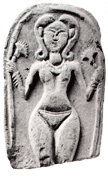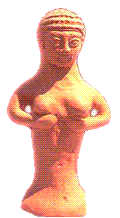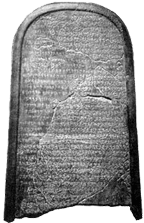Out of EgyptThe two primary books of the Old Testament – Genesis and Exodus – refer to 'Pharaoh' 155 times. Curiously, not once in either book is Pharaoh identified by name – and yet, in fact, the references are to many different pharaohs, across many centuries. The anomaly is all the more telling in that the holy books are not lacking in naming numerous sundry and incidental character. For example, the grandmother, of the grandmother, of King Asa of Judah was Abishalom, should you be interested!(1 Kings 15.10). But this style of literature should be familiar to us all: "Once upon a time, in a land far away, was a bad king. And in the forest, David played ... " It's called a Fairy Tale. Let's remind ourselves of Israel's supposed early encounters with the diverse kings of Egypt –
As nomads, the migratory pattern of the Hebrews might take them into the Nile Delta. Egyptian forces repeatedly passed through Palestine to fight wars further north. Any culture the Jews did not copy from the Babylonians they took instead from the Egyptians. Tellingly,the huge corpus of Egyptian records contains no reference at all to Israelites, the Oppression, the Exodus or Moses. The hapiru were, after all, merely bandits on the Canaanite frontier. The closest we get to ‘Israelites in bondage’ is some evidence for Canaanite cities in the Nile Delta. These almost certainly were established by that alliance of tribes known as the ‘Sea People’ that successfully invaded Egypt in the 13th and 12th century BC. In effect, the Jews, bit-players in a history over many centuries, ‘talked up’ their own ancestral origins by associating themselves with the major empires and events around them. Probably their fanciful tale of the fall of Jericho and other Canaanite cities is a recasting of the invasion of the coastal plain from the north by the Philistines (unlike themselves, users of iron weapons).
Though the colourful story of the Hebrew Exodus from Egypt is known to everyone the legend itselfisa complete fantasy, a re-write of a story learned in Babylon. In Exodus, Yahweh creates a people, not the cosmos:
In the fantasy 'history' (chapter 1 of the Book of Numbers) 603,550 'males of military age' fled Egypt at the time of the Exodus, which implies a refugee army of at least two million – more than the total population of Egypt itself! And this multitude supposedly wandered the wilderness for forty years, contriving to leave not a trace of their passing for posterity. Records one historian:
Not that Egypt had no impact on the people who were to emerge as Jews in the sixth century. Jewish theology is permeated with ideas which had prevailed in Egypt for millennia.For example, that most hallowed of Jewish festivals, the Passover, was borrowed from an Egyptian celebration of the Spring Equinox, of the passing of the sun from south to north of the equator. Passover, the most important feast of the Jewish calendar, is celebrated at the first full moon after the Vernal Equinox, typically occurring on March 21, though it can fall a day earlier or later. Many scholars have seen a link between the sun-worshipping monotheism of Akhenaten and the Yahweh-worshipping monotheism of the Jews. Conceivably, expelled priests of the Aten started the whole thing off. A nomadic people required a portable god. Though they contrived to make a virtue of their technical inability to make idols,none the less, their sacred texts anthropomorphised the deity – a human representation of the pharaoh's sun. So humanoid was their god that initially they provided him with a mobile home, the so-called ‘Ark of the Covenant.' This itself was originally an Egyptian idea. Paraded about as a lethal protector of the tribe and a throne for their god, it somewhat lost its importance when Philistines sacked the settlement of Shiloh and carried away the Ark as a trophy. It was not replaced. Though nominally ‘invisible’ (and now homeless!),Yahweh acquired a most man-like countenance.
| ||||||||||||||||||||||||||||
The book of Exodus is total B and S
by 5go 12 Replies latest watchtower bible
-
5go
Hammurabi ...
Prototype for 'Moses': Akhenaten (1352 - 1336 BC).
Egyptian Empire
-
5go
The Myth of the Jewish ‘Race’
"Thus saith the Lord God unto Jerusalem; Thy birth and thy nativity is of the land of Canaan; thy father was an Amorite, and thy mother an Hittite." – Ezekiel, 16.17.
Race is a sensitive subject. To use the word almost invites the charge of racism. Yet to understand the rise of Christianity one must come to terms the people who were its original authors – the Jews.
The Jews claim themselves to be a race – but are they?
The earliest reference yet found to this singular people is on a statue from the Syrian city of Alalakh, dated to about 1550 BC. The inscription refers to hapiru warriors in the land of Kin’anu – a presence confirmed by clay tablets from Akhenaten’s capital of Amarna, referring to marauders in the hill country of Palestine. The famous stele of Pharaoh Merneptah dated to 1207 BC records 'Israel is laid waste, his seed is not’. 'Israel' here is a reference to a people, not a territory.The weight of evidence suggests these original ‘Hebrews’ coalesced during the bronze age from successive migrations, some from the periphery of the Nile delta (in Egyptian, ‘Peru or apiru meant a labourer) but most from across the Jordan and Euphrates rivers. In their own semitic tongue, habiru meant ‘beyond’, suggesting an origin elsewhere. In Babylonian script khabiru referred to a class of slaves. As a people, therefore, the Hebrews combined Mesopotamian and Egyptian stock, almost certainly drawn from the lowest social order, conceivably including runaway slaves. One migration, at least, brought with it a mountain/sky god – Yahweh – destined for higher things.
Settlement in Canaan
As barbarous newcomers to what was the land of Canaan, these semites (speakers of a tongue common to Syrians, Arabs and Mesopotamians) took up migratory occupation of the less fertile hill-country of the interior. Neither their limited sub-culture – an illiterate donkey nomadism; nor their social organisation – patriarchal and authoritarian – distinguished them from other tent-dwelling pastoralists. These early, polytheistic, Hebrews scratched an existence in an unpromising land on the fringes of the major civilisations, occasionally moving with their animals into the Nile delta in times of draught.
It seems as if they were joined, over time,by outcasts or refugees from the more sophisticated Canaanite (Phoenician) coastal cities. ‘Israel emerged peacefully and gradually from within Canaanite society ‘ concluded Karen Armstrong, the noted religious scholar. (A History of Jerusalem, p23]
The Canaanite migrants brought with them cultic practices and images of their traditional gods. A major Canaanite god was El, and the phrase ‘El has conquered’ gives us the word Isra’el. The Canaanite god El had a ghostly presence in a host of Jewish heroes: Dan-i-El; Ezek-i-El; Sam-u-El, Ish-ma-El, El-i-jah, El-o-him, etc.
God-inspired names were common throughout the west-Semitic language region. Other Canaanite gods included Baal (a storm god) – also honoured in a host of Hebrew names, Asherah (a fertility goddess, consort of El), Shalem (a Syrian sun god – later to be honoured in the name Jeru’salem ), Milcom, Chemosh, etc. Ru’shalimum is mentioned in records of the Pharaoh Sesostris III (1872 - 1847 BC) – the settlement actually pre-existent long before the tribe of Hebrews made it their own. The site then appears to have been unoccupied for three hundred years until the Jebusites (otherwise known as Kereti or Peleti – Cretans or Philistines) arrived.
Blood Sacrifice
Influenced by these Canaanite cults, but devoid of artistic or metal working skills of their own, the early Hebrews adopted a way of honouring their god of choice by genital mutilation. This sometime practice of the Egyptian priesthood became, for the ‘Jews’, a tribal obligation, part of the male regenerative organ offered as a blood sacrifice to the ‘jealous’ god Yahweh. Other gods were worshipped but Yahweh demanded precedence.
Circumcision – a Healthy Option? Don't You Believe It!
For generations, millions of babies were routinely circumcised without anaesthetic – sometimes using a sharpened stone. Even today infant deaths result from this barbarous mutilation.
The unkindest cut.
Thus though the Hebrews were not a race, the males at least acquired a distinctiveness from other Semitic tribesmen who did not practice circumcision. Women, regarded as mere chattels, were spared this mutilation.
In this period of proto-Judaism, polygamous males acted as ‘priests’ for their extended families and kinship groups and exercised absolute authority over wives and children. At some point in the tenth century BC the Hebrews were completely overwhelmed by the more advanced Philistines, moving down from the north. Armed with iron weapons and deploying chariots the Philistines scattered the primitive Hebrew nomads into the hill country and a few austere places in the Jordan River valley.
The various Hebrew clans had no single warlord but were led by tribal elders and shamans. The backward Hebrews remained under the sway of their shamanic ‘judges’ to a much later date than neighbouring peoples. Theirs was a harsh culture of ‘scapegoat’ sacrifice and collective and inherited guilt (‘eye for an eye’ vengeance). As marginalised pastoralists they were acutely xenophobic and demonized the city dwellers and farmers. With the ebb and flow of empires over centuries, and the endless movement of peoples, we might have expected this marginal tribe to have passed into history, along with countless other peoples, assimilated into a greater multitude.
Sacred History
But we have a story, a tale of tribal fidelity – with frequent, and instructive, lapses – to a protector god Yahweh, who had chosen this ‘people’ as his very own. For them, he has a divine purpose. In particular, their migration into Canaan is given an heroic re-interpretation. No longer do we have piecemeal migration over centuries but a single glorious conquest by a cohesive people. The ‘idolatrous’ city dwellers (of ‘Jericho’, etc.) get their comeuppance and the whole land is promised to the Jews in perpetuity. They have, it would seem, arrived as a single group from Egypt, released from slavery by divine intervention.
The extraordinary thing about this ‘history’ - complete with verbatim dialogue between man and god - is that it was not written until more than a thousand years after the supposed events.
Records one historian,
’The first millennium of Jewish history as presented in the Bible has no empirical foundation whatsoever.’
(Cantor, The Sacred Chain, p 51)The impressive race history, tracing the Jews (the people of Judah), back through Hebrews in Canaan and Israelites in Egypt, to a noble ancestor called Abraham (father, it seems, of all the races, including Greeks and Arabs!), and the whole melodramatic story of the Exodus, was concocted at a much later date, after the tribal leadership of these Judaean tribesmen had been taken into exile and had learned the rudiments of civilization from their Babylonian captors. This was not at the dawn of time but in the seventh century BC, when Greece was already a civilization and Carthage had a maritime empire.
Earliest Jewish writings:
9th centuryThere was no written Hebrew before the 9th century BC. At that time, the Hebrews adapted the Phoenician script.
Phoenician Alphabet (alternates)
The original Hebrew/Canaanite occupants of Palestine did pass into history. Many, including the so-called ‘lost tribes’ of Israel (those living in northern Palestine) were assimilated by Assyrian conquerors during the eighth century.
But the ‘victors’, a Persian-sponsored priesthood who settled in Judaea in the 6th century BC, wrote a sacred history, known to the Jews as the Torah (or Pentateuch ) and to the Christians as the first 'five books' of the Old Testament. Together with the 'Prophets' and 'Wisdom' literature this voluminous text purports to be an account of the trials and tribulations of the Jews through the previous two millennia. Rather oddly, its detail and obvious accuracy peters out the closer it approaches the time when it was actually written. Joshua, supposedly on the rampage in the thirteenth century BC gets vast reportage, whereas several 7th century kings known to history are omitted.
Indeed, the four hundred years between the last book of the Old Testament (the 5th century Malachi) and the first book of the New Testament echo in a biblical silence.
No biblical text gives the conquest of Palestine by Alexander the Great (in 323 BC) a mention. Ptolemaic Egypt’s loss of her Palestinian provinces to Syria in 198 BC is unrecorded. 'Minor' personages like Julius Caesar and Pompey the Great are overlooked. And the books of Maccabees – which should tell us the ‘recent’ story of the successful Jewish rebellion against Greek rule in the second century BC – are so blatantly filled with error and incoherence that even biblical editors shunted them into the ‘Apocrypha’ or omitted them entirely.
But of course we are not speaking of history but rather, of sacred testimony, designed to control, justify and inspire.
Anyone can be factual. In the Bible we have a book with a purpose.
"Lachish Letters" – Only first hand 'evidence' for the entire corpus of the Old Testament
A Few Bits of Crockery
"They have entered the land to lay waste ... strong is he who has come down. He lays waste."
The Lachish Letters (British Museum) – a collection of 21 pottery shards or 'ostraca'.
Found in the ruins of Tell ed-Duweir in the 1930s the fragments bear a few words of Hebrew relating to the fall of Judaean cities to the Babylonians in the 580s BC.
The letters are from outposts of Lachish to the city's military commander (a man named Ya'osh) and represent field reports monitoring the situation as the armies of Nebuchadnezzar closed in.
Some writers find confirmation of the biblical 'Jeremiah' in these scraps (Letter XVI to be precise) though the reference could equally well have been to a 'Urijah'.
Jew Who?
Asiatic traders, tomb of Beni Hassan, Middle Egypt. Jews – or not Jews?
'About the year 1000 B.C. there was nothing distinctive about the Jews ethnically, linguistically, politically or economically.'
N. Cantor (The Sacred Chain, p52)
POLYTHEISTIC JEWS?
YHWH and his Asherah
"It will come as an unpleasant shock to many that the God of Israel, YHWH, had a female consort and that the early Israelite religion adopted monotheism only in the waning period of the monarchy and not at Mount Sinai."
– Ha'aretz Magazine, October, 1999'Should you not possess whatyour god Chemoshgives you to possess? And should we not be the ones to possess everything that Yahweh our God has conquered for our benefit?'
– Judges 11:24
Lucky charm? Terracotta plaque of fertility goddess Astarte (Ashtoreth). Similar images have been found extensively in Palestine.
Jews worship Tammuz
'Then he brought me to the door of the gate of the LORD's house which was toward the north; and, behold, there sat women weeping for Tammuz.'
– Ezekiel 8:14.
The Babylonian god actually gives his name to the 4th month of the Jewish religious year.
Jews Worship Anat-Bethel
Jewish mercenaries, garrisoned at Elephantine on the upper Nile from the early 7th century BC, maintained their own Temple.
As a "treasurer's report" records, the Judaean soldiers worshipped both Yahweh (Yahu) and his Canaanite girlfriend Anat, despite the prohibitions of Deuteronomy.
Mrs God
"At two sites, Kuntilet Ajrud in the southwestern part of the Negev hill region, and Khirbet el-Kom in the Judea piedmont, Hebrew inscriptions have been found that mention 'YHWH and his Asherah', 'YHWH Shomron and his Asherah', 'YHWH Teman and his Asherah'.
These inscriptions, from the 8th century BCE, raise the possibility that monotheism, as a state religion, is actually an innovation of the period of the Kingdom of Judea, following the destruction of the Kingdom of Israel."
– Ze'ev Herzog (Prof. Archaeology and Ancient Near Eastern Studies at Tel Aviv University)
First mention of Israelites by their neighbours
The Moabite Stele - Large slab of basalt that records King Mesha of Moab's defeat of Israel "which hath perished forever".
– 9th century BC (Louvre, Paris)
Back Projection ...
"The Bible writers projected backwards into time the kind of political rivalry that was happening in their own day [6th c BC] in order to explain that rivalry and perhaps justify the Israelite position over current border disputes."
Magnus Magnusson (The Archaeology of the Bible Lands - BC, p76)
-
snowbird
Been there. Read that. Still, I believe.
Snowbird
-
5go
Been there. Read that. Still, I believe.
Snowbird
Then you are a fool, sorry.
There is no evidence outside of the bible that exodus ever happened.
-
snowbird
Then you are a fool, sorry.
I'm glad you softened that with a sorry. I beg to differ, however. Time will tell.
Snowbird
-
5go
Time will tell.
3500 years later yeah It did!
-
JeffT
There are other ways to read the Bible besides literally.
-
5go
There are other ways to read the Bible besides literally.
There are no indications from the bible otherwise. In fact it is apologist that are the ones backed into a corner saying "well maybe it is not literal after all" not the bible.
-
JCanon
The two primary books of the Old Testament – Genesis and Exodus – refer to 'Pharaoh' 155 times. Curiously, not once in either book is Pharaoh identified by name – and yet, in fact, the references are to many different pharaohs, across many centuries. The anomaly is all the more telling in that the holy books are not lacking in naming numerous sundry and incidental character. For example, the grandmother, of the grandmother, of King Asa of Judah was Abishalom, should you be interested!(1 Kings 15.10). But this style of literature should be familiar to us all: "Once upon a time, in a land far away, was a bad king. And in the forest, David played ...
You have high hopes in this regard since the Bible is a book of true history. What you may not know, is that there is clear evidence the Bible specifically presents confounding chronology that requires close examination and coordination to fully understand. Thus the Bible doesn't pretend to be outsider-friendly in the least. Outsiders read it and get confused.
In the meantime, if one does wish to critically compare Bible events and chronology from the book of Exodus, for instance, it does quite well. For instance, the fall of Jericho is dated by renown archaeologist Dame Kathleen Kenyon who dug up Jericho to a 25-year period between 1350-1325BCE. She was forced to do so because the last destructive layer of Jericho had cartouches of Amenhotep III in some of the tombs, so we know the Exodus had to have occurred during or after the reign of Amenhotep III.
Kathleen Kenyon: Digging Up Jericho, Jericho and the Coming of the Israelites, page 262:
"As concerns the date of the destruction of Jericho by the Israelites, all that can be said is that the latest Bronze Age occupation should, in my view, be dated to the third quarter of the fourteenth century B.C. This is a date which suits neither the school of scholars which would date the entry of the Israelites into Palestine to c. 1400 B.C. nor the school which prefers a date of c. 1260 B.C."
Page 261 of her book, "Digging Up Jericho," in the Chapter called "Jericho And Coming Of The Israelites," she says:
"It is a sad fact that of the town walls of the Late Bronze Age, within which period the attack by the Israelites must fall by any dating, not a trace remains."
Per accurate Bible chronology, the Exodus occurs in 1386 BCE (19 jubilees, 931 years prior to the return from Babylon in 455BCE), which means the fall of Jericho dates to 1346 BCE, which falls within the archaeological period for the fall of Jericho. In addition to that, a historical reference to when Joseph came into Egypt is found in Manetho, which is dated to the 4th year of Apophis. It notes that Joseph was appointed vizier in the 17th of Apophis, which would begin the 7 years of plenty. This means that Jacob would have come into Egypt around the 24th of Apophis when the 7 years of famine had started. Jacob enters Egypt 215 years before the Exodus. So we can determine which pharaoh was ruling when the Exodus occurred and thus which pharaoh died in the Red Sea. If you use the standard timeline of the Dynasties, 215 years from the 24th of Apophis dates to the end of the rule of Amenhotep III. Thus Akhenaten's reign begins at the time of the Exodus. We all know that Akhenaten abandoned the false gods of Egypt and became a monotheist. That's plenty of evidence the Ten Plagues occurred for some of us!
On the other hand, the Biblical naysayers will claim there was no Exodus and talk about what a great affect all these people leaving would have had on the economy or the culture. Well it did! The new pharaoh of Egypt became a Yawist monotheist! That's a great change! But, of course, as direct as that is, it's downplayed. So there is circumstantial evidence of the Exodus and the Ten Plagues available once you follow history and the Bible to match of the correct pharaoh with the Exodus. There was also some notable decrease in military support of the Canaanites during the reign of Akhenaten which could be attributed to the destruction of the primary chariot army in the Red Sea. So the supportive evidence is there if you look for it.
But of course, I'm sure you'll claim there was no such country as Egypt or any such city as Jericho and the archaeologists are just lying, right? Places and cities mentioned as part of the Biblical fairy tale?
Yeah, right...
JC
-
passive suicide
Okay then everybody.......fools, and otherwise....... you all neeed ta go to www.zeitgeistmovie.com have a beer, and watch......... you are debating rubbish. cheers, passive.









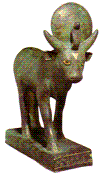
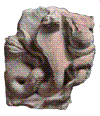


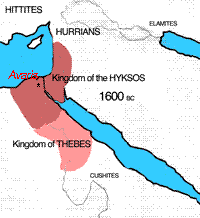
 Fable
Fable Pharaoh
Pharaoh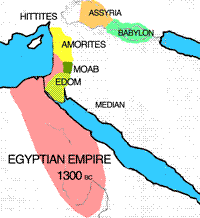
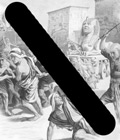
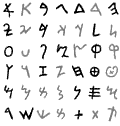

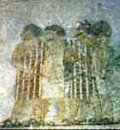 Asiatic traders, tomb of Beni Hassan, Middle Egypt. Jews – or not Jews?
Asiatic traders, tomb of Beni Hassan, Middle Egypt. Jews – or not Jews?